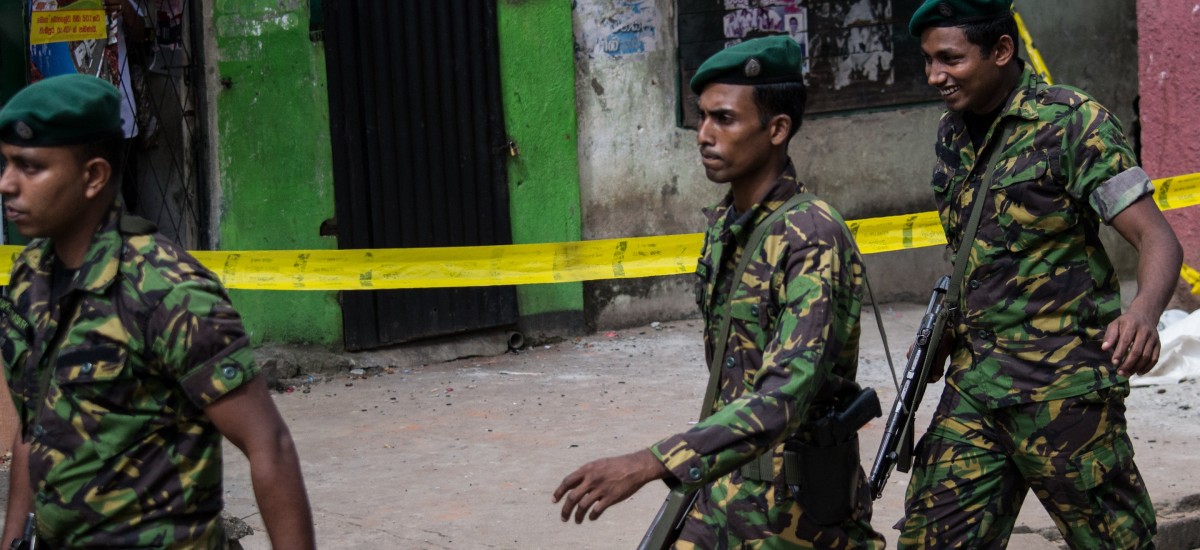In the space of a week Sri Lanka’s freedoms of speech and religion were overridden by acts of violence and intolerance. A heavy handed response by the government towards protesters in Weliweriya was followed up by their inability to safeguard a mosque from the rampaging mobs of Sinhala Buddhist extremists.
Weliweriya, a peaceful protest that turned violent with the deployment of armed soldiers, was but an example of a regime operating on the foundations of mistrust and insecurity. The sight of people taking to the streets in the thousands demanding action from their government no doubt reflected the regime changing protests that we have all witnessed in the Middle East.
Unfortunately women, children and the elderly were not spared when the fighting between protesters and the security forces erupted. Two of the three fatalities that were suffered were those of students, both of whom had been observing rather than participating. The indiscriminate shooting by the armed forces, which according to officials was in response to them being fired upon, targeted all, including journalists, who were on the scene.
The fighting continued while those injured were rushed to the nearby hospitals. Many of the protesters were forced in to hiding, with numerous people telling journalists that they chose to hide in shops out of fear of returning to their homes.
The overly aggressive route taken by the government in dispersing the demonstrators was clearly an intrusion in to the populace’s right for free speech. In a further erosion of this fundamental right, media personnel were prevented from entering the town of Weliweriya while the clashes were ongoing. Police and military persons were quick to bar journalists from entering, and in some instances confiscated cameras of those who were able to photograph the ongoing battles.
While the clashes in Weliweriya, between the protesters and security forces, were sporadic it highlighted the fears of a government that is failing to address the numerous concerns of its people. Two weeks prior to the eruption of violence, the residents of the villages of Weliweriya and Rathupaswela had been complaining of a contamination to their drinking water. The people had simple demands; investigate Dipped Products PLC (a subsidiary of the Hayleys Group) and if found guilty of contaminating the water shut them down.
These pleas fell on deaf ears. With tensions simmering amongst the locals, it was only a matter of time before a public figure came to the forefront. In what turned out to be the catalyst Minister of Public Relations, Mervyn Silva, and the Buddhist monks of the region looked to force the hand of the government.
However, while both parties tried to garner the support of the villagers in actions they considered “protecting the voiceless”, it was clear the religious card trumped that of politics. Silva’s attempt to shut the plant down was short lived and eventually unsuccessful. Yet the Chief Incumbent of the Galoluwa Sri Sambudijayanthi temple, Venerable Theripaha Siridhamma Thero, quickly rallied the local masses and drove them forward. His pledge to fast unto death unless the situation with the water supply was resolved won him admiration from his newfound supporters.
Despite the people being energised by the head priest’s apparent dedication to the cause, his supposed religious leanings were not enough to ensure the peaceful nature of the protest remained. The demonstrations, which bgean under peaceful conditions, quickly deteriorated with both sides resorting to violence.
While the Weliweriya clashes were, as many believe, a case of an over dominant government looking to crack down on freedom of expression; the assault by mobs led by Buddhist monks on the Grandpass mosque was an indicator of a breakdown in religious freedom.
Unfortunately, once again reporting by media was limited with journalists being forced to resort to social networks in providing live updates. A week on from a demonstration of the government’s unwillingness to tolerate mass protests, mobs descended upon a mosque in Grandpass looking to burn it down.
Beginning on Saturday night and progressing through Sunday, mobs led by Buddhist monks and subsequently crowds of Muslim men roamed the back lanes of Grandpass attacking homes and innocent bystanders. Many people were forced to stay locked up in the houses throughout Sunday as riot police and armed STF personnel patrolled the streets.
The idea of members of the clergy encouraging a peaceful demonstration had clearly been abandoned. Buddhist monks were seen with the crowds inciting them to continue their assault on the mosque and its occupants. In a startling revelation, on scene journalists were told that families living in the area had sent their children away to spend the night in “safer suburbs”. They feared that once the darkness of the night descended, their safety would no longer be guaranteed.
Contrary to the reports reaching the public, journalists and residents were forced indoors as clashes sporadically erupted amongst the various groups. The fear and trauma residents underwent had been fuelled, ironically, by supposed members of the clergy. It was just a week prior to this that monks had been looking to safeguard its people from the neglect of a government.
Incidentally the government, who had received widespread criticism for its handling of the Weliweriya incident, had chosen to take a step back in dealing with the roaming mobs. Despite the presence of armed STF, there was a noticeable decline in intensity on the part of the security forces in controlling the situation.
The two clashes have shown us that the religious groups of Sri Lanka are growing in extremism, able to muster the masses on to the streets and threaten the law and order of society. The government’s see-sawing reaction to these outcries of the populace leaves many questioning their commitment to upholding any semblance of democracy.
With the country having just marked its 30th anniversary of the Black July riots, the communal clashes in Grandpass was a hideous reminder of what we are capable of.








